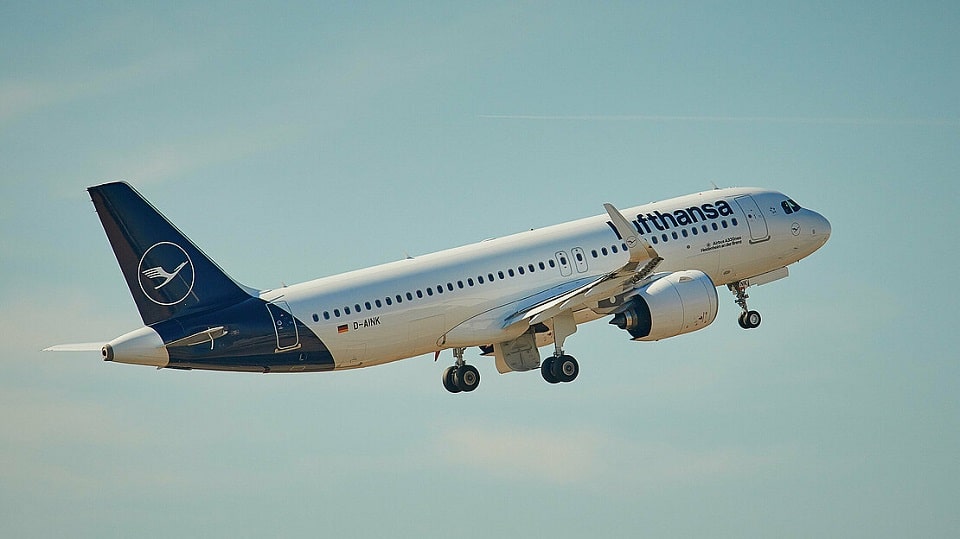Airlines
Lufthansa Group invests in new technology to transmit flight trajectory information in real-time

A flight path that is optimized can save fuel and save CO2 emissions. The Lufthansa Group hopes to significantly enhance airspace management in Europe, prevent pointless detours, and fly more sustainably with the standard installation of a new, innovative system for conveying flight profile information in its new A320neo/A321neo aircraft. More than 65 Airbus A320neo/A321neo aircraft are on order and will be delivered to the Lufthansa Group starting in 2024.
These aircraft will be fitted with the latest ADS-C EPP (Automatic Dependent Surveillance – Contract Extended Projected Profile) flight profile information technology. As a pioneer, the airline business is supporting the new technology’s quickest rollout across Europe by making an early investment in it. Beginning in 2028, all newly delivered aircraft and ATC must be equipped with the new technology as standard.
Future 4D flight path information created by the aircraft’s flight management system will automatically be transmitted to air traffic control at any time as a result of new technologies for real-time transmission of flight path information. This so-called 4D flight trajectory represents the subsequent course of a flight in the four dimensions of time and three spatial dimensions (length, width, and height). The more accurate information regarding an aircraft’s future flight path, the more effectively air traffic control can manage the airspace and plan the aircraft’s route.
Boeing found a new solution for Aircraft Maintenance. How does it work?(Opens in a new browser tab)
The automatic transmission of aircraft route data aids in the upgrading of EU airspace. The first airspace in Europe to fully comply with the standards is Maastricht airspace (MUAC), where new aircraft from the Lufthansa Group will be allowed to use the new technology. The Lufthansa Group is collaborating with other providers of air navigation services to ensure that flying will be even more fuel-efficient in as many European airspaces as possible as soon as possible. The new technology is currently approved for use with the Airbus A330neo and A320 series of aircraft.

Airlines
Sanctions & Engine Issues Ground Half of Russia’s A320neo fleet

Russia’s aviation sector, already strained by Western sanctions, faces another setback as nearly half of its Airbus A320neo family aircraft are grounded due to unresolved engine issues.
This development highlights the growing challenges for russia commercial aircraft in maintaining their fleets under the weight of global restrictions and limited access to spare parts.
Out of the 66 Airbus A320neo and A321neo jets in Russia, 34 are now out of service, according to the Kommersant business newspaper. These planes are powered by engines manufactured by Pratt & Whitney, a subsidiary of RTX Corporation.
DAMAC Air: Dubai’s New Luxury Airline Offers Free Flights for Registration
The engines are affected by a previously identified defect in the metal used for certain parts, prompting accelerated inspections and maintenance.
Sanctions have compounded the issue, blocking the supply of essential components from major manufacturers like Boeing and Airbus. Without proper maintenance, experts warn that these aircraft may face decommissioning as early as 2026.
COMAC Unveils Plans for the C929 to Rival Airbus and Boeing
Airlines like S7, which operates a significant portion of these grounded jets, plan to conserve the engines for future use during peak travel seasons. However, reports suggest that over 20 of S7’s Airbus planes have engines that have already reached the end of their operational lifespan. Recently, russia seeks assistance from kazakhstan’s airlines to bolster its domestic flights.
While some A320neo and A321neo planes in Russia are equipped with French-made LEAP engines, which are seen as less problematic, the challenges remain daunting.
The situation underscores the long-term impact of sanctions on Russia’s aviation sector and the increasing difficulties in keeping its modern fleets operational.
-

 Aviation2 months ago
Aviation2 months agoMicrosoft Flight Simulator Raises $3 Million to Bring Back the An-225 Mriya
-

 Airlines2 months ago
Airlines2 months agoQantas Engineers Stage Walkout Over Cost of Living Concerns
-

 Airlines2 months ago
Airlines2 months agoQatar Citizens Can Travel to the United States Without a Visa
-

 Aviation2 months ago
Aviation2 months agoQatar Airways bans these new Electronic Devices on plane
-

 Airlines2 months ago
Airlines2 months agoJapan Airlines Rolls Out Free Domestic Flights to International Passengers
-

 Defence2 months ago
Defence2 months agoWhich Country Has the Largest Fleet of Fighter Aircraft?
-

 Airport2 months ago
Airport2 months agoWestern Sydney Airport Welcomes Its First Plane After 6 Years of construction
-

 Aviation2 months ago
Aviation2 months agoDid you know ? Once Boeing 747 carried 1088 passenger in 1991








